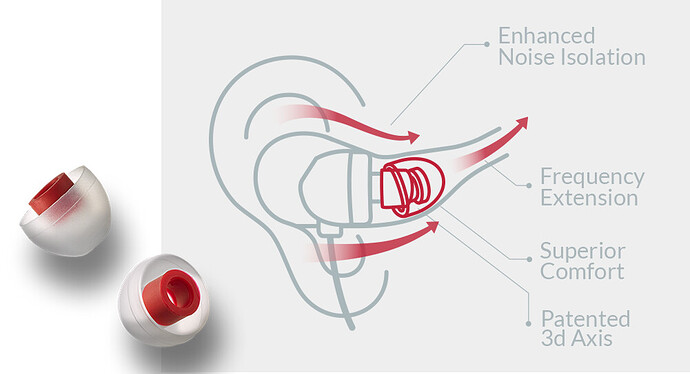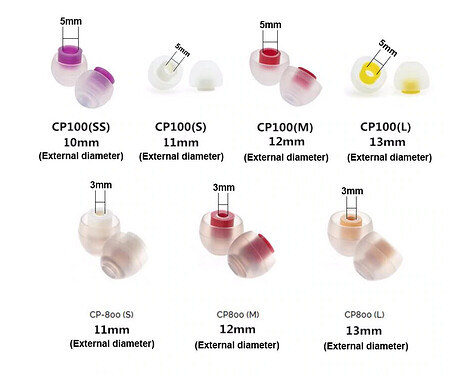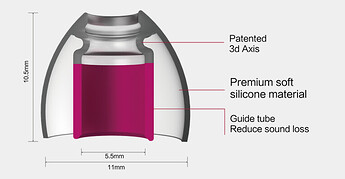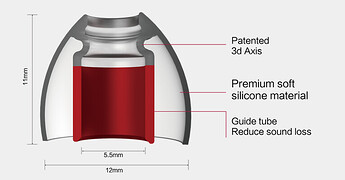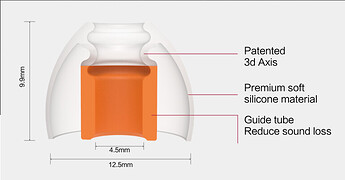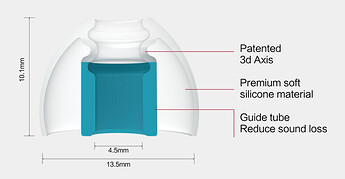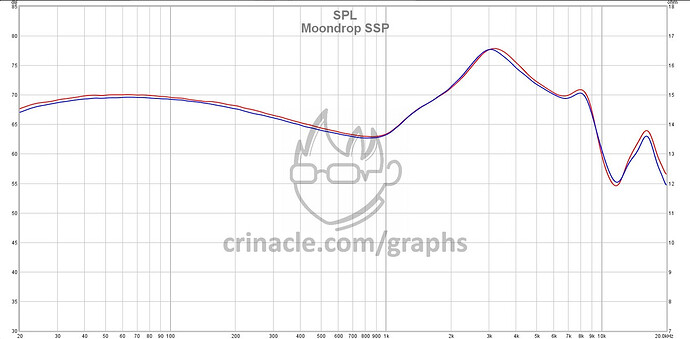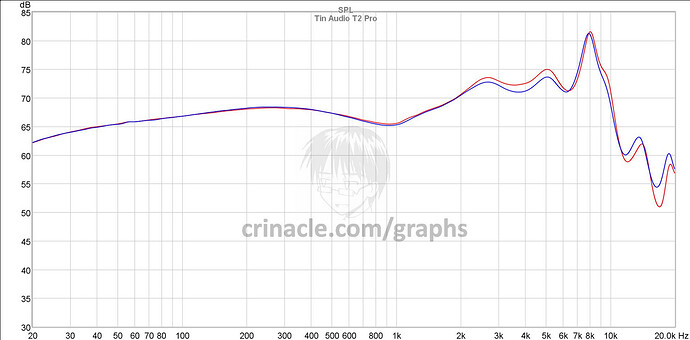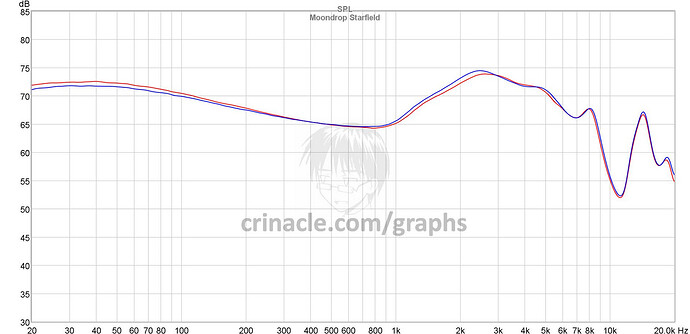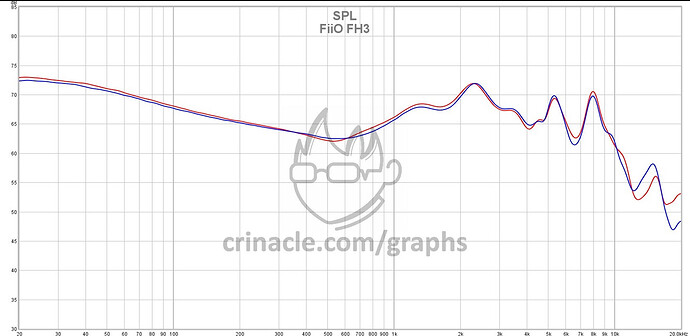Gaming IEM ranking
Hey everyone, this is a relatively short IEM list and a guide of some sort for iems I’ve tried and give a small review about them. I’ve been playing fps for about 10 years now, I have tried all of these iems if anyone wants to add any iems they are more than welcome to but unlike others I will not be recommending any iems I haven’t tried myself with my own ears.
~
First up is THE most important thing, comfort and for iems that’s tips and the shape of the IEM, I will talk about each particular IEM size and shape later on, in their own review but for tips I will recommend a few that I’ve tried and liked.
~
~Ear tips
DUNU Spinfit
First up are the classics, Spinfits (2019 version)
The 2019 version is an improvement over its previous version I have tried both and the main differences are in the silicone they use and the patented mechanism they use, very similar but different in some ways.
The bore’s walls are now a bit thicker which changed the soundstage from its previous model, the silicone they used is more flexible and soft something that I greatly appreciated.
Generally Spinfits have both pros and cons mainly the comfort is much better than any other stock eartip. Because of its patented ergonomic concave design that allows the ear tip to swivel, making it flexible to bend and twist to the contour of a person’s ear canal.
Now when it comes to sound spinfits have a great impact in the lower frequencies and in the treble area too, provides a clearer sound all around with deeper and tighter bass and cleaner highs. The main difference is in the lower frequencies where you can easily hear the boost. When it comes to soundstage because of the thicker bore soundstage feels more narrow for sure not a big difference but its still there.
~
Sizing
~
CP 155 S
CP 155 M
CP 155 L
CP 145 S
CP 145 M
CP 145 L
Remember to check your IEM bore size too, it can be stretched to fit bigger bores but not smaller ones.
AZLA SednaEarfit XELASTEC
Next up are the AZLA SednaEarfit, a bit of a long name but these use a very different material from classic silicone tips. These eatips use XELASTEC which changes softly by body heat after a few minutes to fit the various shape of the ear canal without any stress. SednaEarfit XELASTEC eartip absorbs body heat energy and getting more elastic property, so it can fit better to the ear and gives perfect seal. That can sound like a bunch of bs, but after buying every single size I can tell you it’s not. The trick with these tips is that you need the correct size if you don’t they will not fit well but once you do these fit you like a glove. I have these on my Moondrop Blessing 2 : Dusk and I prefer them over the spinfits because the fit the big bore size better. In terms of how these change the sound they do make the bass stronger though unlike the spinfits they don’t mess with the treble frequencies as much. Mids don’t change and highs get a slight boost, soundstage remains wide and deep, no complaints at all.
~
Sizing
~

I’d recommend you to get the 3 pair, so you can find the correct fit.
Azla SednaEarfit Silicone
These are very soft silicone eartips, nothing special just good soft tips. I have used these on like my Moondrop SSP, and they worked very well to fill my ear and I could wear them for hours easily. Not gonna talk a lot about them but they are a good choice highly recommended since they don’t mess with the sound a lot, slight boost in the treble area more tight bass and the soundstage is wider compared to the Spinfits.
~
Sizing
~
![]()
Now to the IEMS, ill start with IEMS under or close to 50USD and slowly move up in price to 200-$250.
IEMS
What am I looking for when listening for “Gaming” IEMS, well mostly soundstage and imaging, how crispy are footsteps and how lively the whole game sounds. All iems have been tested in CSGO/R6/Valorant/EFT/Insurgency: Sandstorm/Star Wars Jedi: Fallen Order.
Moondrop SSP
First up the moondrop SSP right at around 40-45USD.
The SSP has a single BeryIIium-coated dome diaphragm dynamic driver encased in the same tiny amorphous metal alloy housing as the SSR.
I’m not gonna focus on the Packaging and Accessories as much, but it comes with a small carrying pouch that’s way too small for actual practical use and some eartips that are way too hard and a very meh cable, its usable just nothing special. The shell is made really well, overall these iems are like tanks for 40USD made out of strong metal and minimal that can fit even the smallest ears very well making the seal wonderful. At the time of writing, the SSP is only available in a dark navy blue color with a matte finish. The face plates are an L or arrowhead shape and sport a gold-coloured hex screw that contrasts beautifully with the deep blue color of the shells.
One of the first things I noticed about the Moondrop SSP is that it’s quite power-hungry. Although it can be driven straight from a smartphone, I highly recommend using a DAP or some form of amplification to get the most from it. The bass is rich, hard-hitting and is one that’s very physical in terms of impact. You can feel the SSP vibrating with bass in your ears at any given chance. That’s not to say this is a bass head IEM per se. It isn’t. In fact, although the bass is boosted, it still sits slightly behind the upper midrange in the mix. The midrange is still fairly neutral, especially in the lower bands. Male vocals sound uncolored and articulate with just the right amount of body for naturalness. In addition to the lift in the bass, the SSP’s upper midrange has been slightly attenuated which reduces some glare and produces a more natural albeit for some a less exciting sound. The transition is fairly smooth from the upper midrange all the way through to 8kHz before it starts to steadily roll-off. This puts most of the focus firmly in the lower treble which has sufficient drive but at the same time leaves the upper treble feeling slightly compressed. Nevertheless, the level of detail is still very good overall. The SSP’s soundstage dimensions are modest but still reasonably spacious. Stage positioning is somewhat forward, but there’s a good sense of depth behind and to the sides of the center image. The control of the bass and the neutral weight of the midrange improves instrument separation and avoids congestion. Overall for just under $50 this IEM is amazing for music and gaming with a wonderful soundstage and imaging, I was impressed with how spacious it felt comparing it to the Blon bl-03/05 and T2 pros.
Tin T2 Pros
Coming up the T2 Pros from Tin hifi at 55USD.
The T2 Pros have Dynamic 10MM woofer + 6MM Tweeter (2DD drive unit) encased in a small bullet like metal alloy casing. They are very comfortable and relatively small thus can fit pretty much any ear shape if you have the right eartip and when it comes to eartips the T2 Pros come with 3 sets of narrow bore silicone tips and 3 sets of wide bore silicone tips and one of foam tips, I personally dislike both, but you might like them. The cable it comes with is very good for the price I’m very happy with it since it doesn’t keep its shape and the connectors are metal and very durable. The T2 Pros has a conservative amount of bass, but the quality is outstanding. Mid-bass is nimble and textured with a fast attack and decay. Bass notes are lean but dense, resulting in loads of punch and a good low-end energy. Here is where the T2 Pro does some of its best and also some of its worst work. The midrange is rendered with a boatload of clarity and articulation but is somewhat thin and analytical. Electric guitars have outstanding texture and grittiness but sometimes lack body. It’s in the treble where things go a little awry with the T2 Pro. Sure, the boosted treble has some benefits, such as more clarity and better extension. But it also makes the overall tonality unnaturally bright and at times excessively strident. If you love a bright and energetic treble presentation then there’s a good chance that you will enjoy the T2 Pro. It’s not for me though. Such a shame, really. Soundstage actually exists with this budget earphone - and it’s not even half-bad. There’s depth and space, allowing you to place instruments around you really great for gaming when paired with some nice tips, I could easily play all day.
Dunu DM-480
Duni DM-480 comes at 80USD
This is an IEM I haven’t heard a lot about and when I listened to it, I wondered why, The DUNU DM-480 is a U shaped dual DD set, boasting superb isolation, above average technicalities (for a DD set), wide soundstage and well extended bass of good quality. It comes with 2 sets of silicone tips one with a wider bore and one with a thinner one, 3 sets of the wide bore type and 2 of the thin one and a clip for the cable which is a very nice cable relatively thin and doesn’t get tangled much since it doesn’t have a lot of memory.The DM-480’s shell is of good resin quality, it looks and feels like semi customs. It has a concha protrusion, which some may like or dislike i personally liked it very much and all of the people that have tried with the correct size of tips said it was very comfortable since the shape isnt very agressive which is a good thing in my book. Regarding isolation with an estimated of about 25 dB isolation using stock tips. This makes the DM-480 a superb transit IEM or for LANS and loud enviroments.The DM-480 can be driven from a smartphone but scales much better with amping in terms of dynamics, details and soundstage. The DM-480 is quite power hungry actually, considering the specs (impedance 20 ohms), it takes about 10 – 20% more juice to drive than some of my other IEMs of similar impedance.The first thing I noticed when listening to the DM-480 is the sheer amount of bass quantity it has. There’s a visceral amount of it. Subbass and mid-bass are large and in charge without any roll-off in the low end. It rumbles. The transition from mid to upper bass is a smoothed deescalation. Thus, the bass response in the DM-480 is quite well contained without much bleed to the mids. Bass impact is heavy-handed with a lot of impact and well-defined with a note decay that is rather quick. Tonally, the DM-480 a little dry and to be honest, a little one-dimensional. As mentioned before, I did find that the S sized tips helped open up the bass a bit, allowing for a better subbass response. The lower mids are lightly elevated as the boosted bass settles down to a more balanced signature. This adds a slight sense of thickness to the overall tone of the DM-480. Otherwise, the mids are fairly standard in a good way. There is an appropriate amount of pinna compensation around the 2 kHz mark for a natural vocal presentation though they do sound slightly distant. Above that at around 3-4 kHz is a small dip that tames the aggressive bite of electric guitars. Once again, timbre is on the dry side, especially for stringed instruments. As a whole, the mids of the DM-480 is easy to listen to with no real flaws to speak of. There’s a small peak in the lower treble to give the DM-480 some energy for the attack of the hats/cymbals and chime-like instruments. Beyond that however the DM-480 starts to wind down as its mid and upper treble responses are quite tamed. Thus, you get more of a crisp initial impact for hats/cymbals but little in the way of shimmer and decay. The treble response of the DM-480 helps maintain an overall clarity to the sound but isn’t particularly remarkable. I find that the tamed treble does suppress the sparkle or airiness to a certain extent in a number of tracks. On the up side, the DM-480 isn’t ever sibilant for me. Despite the DM-480 being unvented and having a closed isolating design, the soundstage width and height is on the big side. Depth of soundstage is bigger than average but it isn’t as good as some multi BA/hybrid sets.
Moondrop Starfield
The Moondrop Starfields come at 100USD
A very popular iem that i didnt think would work very well for gaming but i was mistaken. The Moondrop Starfield is a universal monitor that uses a carbon nanotube diaphragm 10mm dual cavity dynamic driver. This iem comes Cable that comes with the box is a 3.5mm unbalanced cable. It’s a 2 pin (0.78) which is purple in color to complement the Starfields. The cable braiding is not the best one we’ve seen. It definitely gets the job done. The case is a semi-hard shelled round carrying case and it’s pretty small to be quite honest i find it hard to put them in, in a rush.his is without a doubt the densest and heavy small IEM I’ve ever used in this price tier. The Starfield is significantly heavier than the FiiO FH1s I have just bought.This feels like a literal solid chunk of aluminum and might be the new standard for build quality in a budget IEM for my foreseeable future. I simply have nothing else to compare this to that is nearly as solid feeling as these are. It is quite something to hold in my hand and another to wear them.This IEM has a smooth feeling on the low end, lacking a strong sense of dynamic and physical impact (strike and wince factor). The IEM is non-fatiguing for me after hours of usage and it doesn’t require much amplification to max out its low-end potential.The Starfield IEM is moderately forward in physical presentation, meaning it is not relaxed feeling, nor overly engaging in forwardness. I consider this the normal average for most IEM’s out there, most headphones really, in general terms. The experience is not what I would consider dense or hefty, it is again…moderate in tonality and physicality.For detail retrieval, I hear the best image clarity and detail representation in the Starfield’s lower midrange. In fact, I find this to be easily the best representation of lower midrange detail in any entry-level IEM so far. With that said, this is still recognizably an entry-level IEM, and its detail limitations show up in the treble. But I do think this is quite a bit better than what would be found in typical dynamic driver IEMs, even if it’s not quite on the level of multi-balanced armature driver IEMs that come in around $200. For soundstage and imaging, the Starfield takes is pretty good for its price. This does sound like more of a two dimensional image to me. Lateral definition is good and it has an appropriate amount of distance to it, however the center image is not as deep as i’d like it to be. This is especially evident once again in the lower midrange where I think the Starfield’s dynamic driver shines most brightly but for gaming these do an amazing job, playing EFT and R6 i could hear steps on wood or the enemy stepping downstairs fairy easily and i was impressed.
FiiO FH3
The FH3 from Fiio comes at 120-125USD.
A relatively new iem which has a beryllium-plated 10mm dynamic driver for the bass, Knowles ED-30262 BA for the midrange and a Knowles RAD-33518 BA for the treble. Compared to headphones in Fiio’s other entry-level FH1S segment, the FH3 has been upgraded significantly from inside to outside design. The FiiO FH3 shares a common design language with FH5. It has a metal housing and waveform pattern. However, the FH3 colors are completely black which looks very good in my opinion and is very comfortable the shape is very safe and a bit on the bigger side which i liked a lot but some people with small ears might have a problem with. The cable it comes with is pretty good but i’d swap it for an after market one since ive had problems with stock fiio cables in the past and this seems the same as those. It also comes with a fairy nice and big case which i like and the stock silicone tips that are meh at best. The FH3 sounds organic and natural yet pay attention and you’ll notice the excellent instrument separation and detail retrieval which among other things, help to deliver a good overall resolution. When it comes to note weight, the FH3 nails that too and find the perfect point between thick and thin. One other outstanding characteristic of this earphone is the dynamic range. Even when you’re listening at very low volume, the size and weight of the bass are still there. And when you turn things up loud, there’s no shrill treble peaks or shouty upper midrange: the tonal balance is maintained at all volume levels. It all adds up to a sound that just makes listening so enjoyable. FH3’s bass is dynamic, punchy and textured. Whether it’s the beryllium-plating, S.TURBO acoustic design or a combination of both, it works. There’s a slight emphasis on the sub-bass, giving the bass an unquestionable authority. Thankfully, the decay speed is good so it’s authority without bloom or excessive bleeding. What I really like about the FH3 midrange is the tone and note weight. It sounds so natural and inviting yet the clarity is excellent and the air between instruments is clean as a whistle. There’s great separation between the midrange and the upper bass but male vocals still have fullness and body. The treble extension is very good and the sound is airy while maintaining good density. It’s not the most forward treble but the timbre is on point and there is no trace of sibilance to be heard. Furthermore, the FH3 treble is very even and doesn’t display any dissonant peaks or shadowy valleys: just airy bliss with a hint of sparkle. he soundstage dimensions are quite good but not what would be considered expansive. However, the quality of the FH3’s stage is a tier above most IEMs at this price point. It just sounds especially natural and lifelike. Honestly this iem is the best iem under 150 ive heard for gaming.
Ikko OH10
The OH10 from Ikko comes at 200USD.
This bass god tier iem sports a 1BA+1DD hybrid design by using 10mm titanium-plated polymer composite diaphragm with a Knowles 33518 BA driver. It comes with a decent leather case some pretty bad hard silicone tips and a cable that i’d throw in the trash, very thin and flimsey which is the first thing i’d change and tips right after but once you change those two things it becomes the god tier iem that’s been known to be. The OH10 repeats excellent linearity in the sub-bass, releasing the mid-bass, as the W-sound canons command. The quantity, is not worthy of the qualification: “suitable for Bass-Heads”, but surely they will be able to enjoy without complaint, unless you look for a bloated bass or more emphasized in its middle zone, characteristics that these Ikko do not possess. Extending the power, towards the lower end, guarantees the notable cleanliness that the OH10s demonstrate in the low range, but also limits the greatness of the sensation obtained. But it is still a rule of the game, which Ikko wanted to perpetuate in this new model. Because, the sensations that continue to persist, are the control and the desire to want to remain long sounding in our ears. That’s why the bass never feels invasive, nor excessive. Its purpose is to give the listener softness and mystery, desirable oscillations of very low frequency, which strike docilely, without reverberating more than is convenient, generating wide planes of unfathomable depth. With all this, the idea that remains in the environment, is the generation of a sense of presence, against a feeling of quantity or greater power. The bass sounds fast and concentrated, well defined and laminated, minimally rough, just enough to provide the sweet texture it has, as well as a dark color, but cold: that coldness, which characterizes the sound of the OH10, in the rest of the ranges.The midrange enjoys a great sense of openness and clarity. The transition between the lower and mid areas is clean, very surgical and well-defined. The OH10s respect, in a remarkable way, the confluence between both zones, providing light, resolution and definition. In addition, they generate an excellent sensation of width and separation. It is worth noting the enormous transparency in the range, as well as the large amount of air that can be perceived.The upper zone of the OH10, again, offers more quality than quantity. The energy of the treble is quite restrained, but at the same time the expressiveness and definition is very well balanced. These Ikko manage to sound abundant and rich in detail, without being too crisp, too bright or too sharp. In this sense, the idea of wanting to be suitable for long listening is totally evident in the way the high notes are presented. The perception of the trebles is smooth and quite fine, with notable extension and a great feeling of air. They bring a lot of clarity and never sound excessive or hurtful, due to their delicacy and control.Due to the large amount of air that the OH10 is capable of generating, the scene is built very wide, leaving the depth and height in the background. In this way, the sensation of three-dimensionality is not very great, despite the excellent separation existing in all the ranges. The sound is very atmospheric very wide and deep, playing Starwars and EFT i could really hear the detail and i felt like i was in the middle of the galaxy and of a forest respectively.
In the end these are just some iems i’ve tried and feel like worked very well for gaming, please feel free to correct me in the comments about anything and suggest any other iems <3
Here’s a kitty, happy gaming
